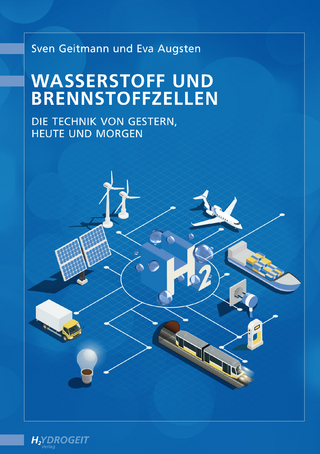
INCOSE Systems Engineering Handbook
John Wiley & Sons Inc (Verlag)
978-1-119-81429-0 (ISBN)
Systems engineering practitioners provide a wide range of vital functions, conceiving, developing, and supporting complex engineered systems with many interacting elements.
The International Council on Systems Engineering (INCOSE) Systems Engineering Handbook describes the state-of-the-good-practice of systems engineering. The result is a comprehensive guide to systems engineering activities across any number of possible projects. From automotive to defense to healthcare to infrastructure, systems engineering practitioners are at the heart of any project built on complex systems.
INCOSE Systems Engineering Handbook readers will find:
Elaboration on the key systems life cycle processes described in ISO/IEC/IEEE 15288:2023;
Chapters covering key systems engineering concepts, system life cycle processes and methods, tailoring and application considerations, systems engineering in practice, and more; and
Appendices, including an N2 diagram of the systems engineering processes and a detailed topical index.
The INCOSE Systems Engineering Handbook is a vital reference for systems engineering practitioners and engineers in other disciplines looking to perform or understand the discipline of systems engineering.
David D. Walden, ESEP, is Co-Owner and Principal Consultant for Sysnovation, which provides Systems Engineering training and consulting throughout the world. He is an INCOSE ESEP, a Senior Member of the IEEE, member of Tau Beta Pi, and the recipient of the INCOSE Founders Award. He resides in the USA. Dr. Thomas M. Shortell, CSEP, is an Associate Fellow at Lockheed Martin and an adjunct professor at Drexel University. He is an INCOSE CSEP and is co-lead of the INCOSE Future of Systems Engineering (FuSE) Initiative. He resides in the USA. Garry J. Roedler, ESEP, is a retired Senior Fellow and Engineering Outreach Program Manager for Lockheed Martin Corporation. Garry is a Past President of INCOSE. He is an INCOSE ESEP and Fellow, the recipient of the INCOSE Founders Award, the IEEE-SA Lifetime Achievement Award, the IEEE-CS Golden Core, the USC CSSE Lifetime Achievement Award, the Lockheed Martin Technical Leadership Award, and the Lockheed Martin NOVA Award, among others. He resides in the USA. Dr. Bernardo A. Delicado, ESEP, is a senior Systems Engineer with significant experience in collaborative Aerospace and Defense projects at European level. He was founding member of AEIS (The INCOSE Spain Chapter) and its President, the first Spaniard to earn an INCOSE ESEP certification, a member of INCOSE Advisory Certification Group (CAG), and a Systems Engineering Body of Knowledge (SEBoK) Editor. He resides in Spain. Odile Mornas, ESEP, is a graduate of the Ecole Nationale Supérieure de Mécanique et des Microtechniques (ENSMM). She holds a post-graduate degree and has worked for 40 years at Thales, including 15 years as a senior Systems Engineering expert and internal trainer. She is an INCOSE ESEP. She resides in France. Yip Yew-Seng, CSEP, is a founding management committee member of the INCOSE Singapore Chapter, its first CSEP, and was its President. His work experience includes a defense and systems engineering conglomerate, a university, a national R&D organization, multinational corporations, and telecommunications companies in Singapore, USA, UK, Israel, China, and Cambodia. He resides in Singapore. Dr. David Endler, ESEP, is a Systems Engineering Consultant, Trainer, and Coach. He is the Project Editor of ISO/IEC/IEEE 15288 and was INCOSE’s Technical Director. He is an INCOSE ESEP and GfSE SE-ZERT® Level A. He resides in Germany.
History of Changes xi
List of Figures xiii
List of Tables xvii
Preface xix
How to Use This Handbook xxi
1 Systems Engineering Introduction 1
1.1 What Is Systems Engineering? 1
1.2 Why Is Systems Engineering Important? 4
1.3 Systems Concepts 8
1.4 Systems Engineering Foundations 15
1.5 System Science and Systems Thinking 21
2 System Life Cycle Concepts, Models, and Processes 25
2.1 Life Cycle Terms and Concepts 25
2.2 Life Cycle Model Approaches 33
2.3 System Life Cycle Processes 39
3 Life Cycle Analyses and Methods 159
3.1 Quality Characteristics and Approaches 159
3.2 Systems Engineering Analyses and Methods 192
4 Tailoring and Application Considerations 215
4.1 Tailoring Considerations 215
4.2 SE Methodology/Approach Considerations 219
4.3 System Types Considerations 229
4.4 Application of Systems Engineering for Specific Product Sector or Domain Application 244
5 Systems Engineering in Practice 261
5.1 Systems Engineering Competencies 261
5.2 Diversity, Equity, and Inclusion 265
5.3 Systems Engineering Relationships to Other Disciplines 266
5.4 Digital Engineering 273
5.5 Systems Engineering Transformation 274
5.6 Future of SE 275
6 Case Studies 277
6.1 Case 1: Radiation Therapy—the Therac-25 277
6.2 Case 2: Joining Two Countries—the Øresund Bridge 278
6.3 Case 3: Cybersecurity Considerations in Systems Engineering—the Stuxnet Attack on a Cyber-Physical System 280
6.4 Case 4: Design for Maintainability—Incubators 282
6.5 Case 5: Artificial Intelligence in Systems Engineering—Autonomous Vehicles 283
6.6 Other Case Studies 285
Appendix A: References 287
Appendix B: Acronyms 305
Appendix C: Terms and Definitions 311
Appendix D: N2 Diagram of Systems Engineering Processes 317
Appendix E: Input/Output Descriptions 321
Appendix F: Acknowledgments 335
Appendix G: Comment Form 337
Index 339
| Erscheinungsdatum | 28.06.2023 |
|---|---|
| Verlagsort | New York |
| Sprache | englisch |
| Maße | 201 x 252 mm |
| Gewicht | 703 g |
| Themenwelt | Technik ► Elektrotechnik / Energietechnik |
| ISBN-10 | 1-119-81429-4 / 1119814294 |
| ISBN-13 | 978-1-119-81429-0 / 9781119814290 |
| Zustand | Neuware |
| Haben Sie eine Frage zum Produkt? |
aus dem Bereich


